Driving digital transformation one touch at a time
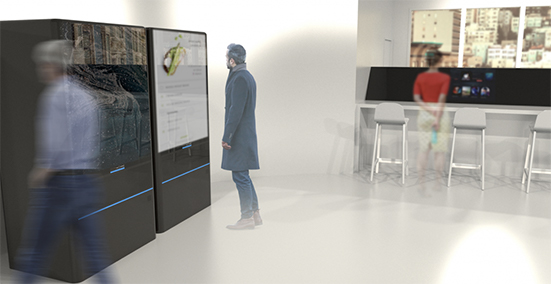
Driving digital transformation one touch at a time 3M Share Experientia gathered expert insights and voice of customer insights about intelligent self-service applications to create coherent storytelling for 3M clients and to provide compelling choices through predictive, engaging and learning touchpoints. We conducted a global benchmark research and interviews with industry experts to understand trends, changing paradigms and crucial concepts around intelligent self-service and created a B2B sales tool prototype: the innovation playbook that communicates the research outcomes. 3 things to know Global research Our benchmark focused extensively on Europe, US, China and Japan while industry experts joined our research from 5 different countries, bringing insights from all around the world. Driving digital transformation Design principles modelled empathic, people-centric frameworks for developing self-service experiences. Innovation playbook in action Future scenarios illustrate fast, intuitive, hassle-free experiences to end users who expect beauty and usability, familiarity and seamless connections. Gallery In depth Service mix: Design thinking Envisioning Business strategy design Information architecture Participatory design Service design Ethnography Context 3M offers a wide range of standard and customizable single-touch and multi-touch systems that are easy to integrate into OEM and display solutions, as well as a portfolio of fully integrated displays. This allows 3M clients to create interactive and immersive touchscreen experiences with systems and displays that are engineered for commercial applications and backed by advanced touch technology that’s ultra-fast, reliable and responsive. Challenge 3M reached out to Experientia to better understand its customers context and future scenarios that could strengthen its service offering. Research Experientia conducted a global benchmark research, collecting best practices and global innovative examples of self-service UX/UI systems, extracting relevant themes and trends. We interviewed 10 experts in architecture, design, food & beverage to gather first hand knowledge on how customer experiences are fueling innovation in the segment, and to understand trends, changing paradigms and crucial concepts around intelligent self-service. Design Experientia prioritized the interview insights using affinity mapping and constructed near-future scenarios analyzing different factors affecting UX. Ideation sessions generated new ideas to redefine how brands engage customers with intelligent self-service applications. Experientia designed a self service innovation playbook documenting research insights, design principles and scenario. It comes in a box containing the insights booklet, idea cards and impact map for co-creation, to aid collaborative design making. Impact The self service innovation playbook is now being used as a B2B sales tool to engage clients. Related projects All Services Behavioral design Research and assessment Strategy B2B Collaboration UI, redesigning the filter navigation experience B2B Reinventing customer and supplier interactions for a multinational flooring company B2B AR tools for industrial maintenance Go back to our portfolio
Innovation opportunities in the Polyclinic of Palermo
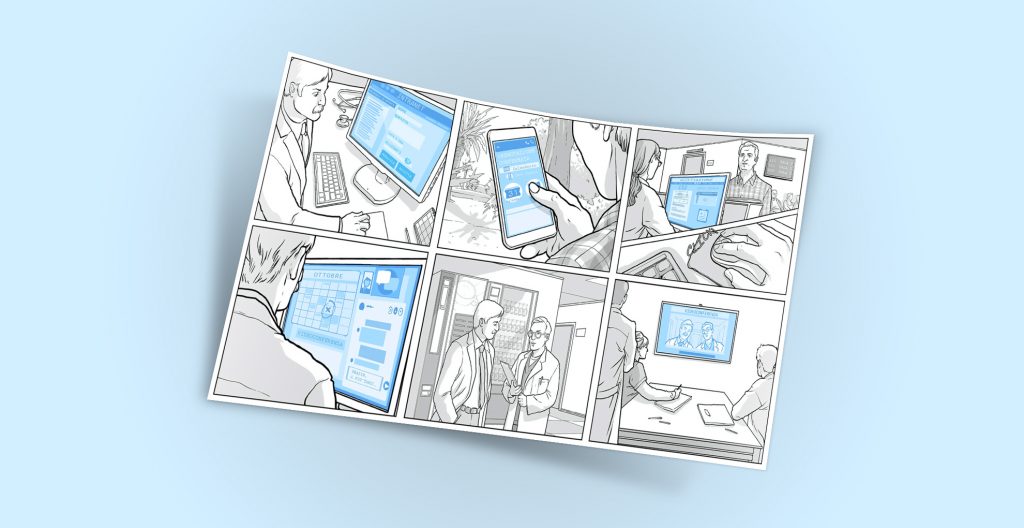
Innovation opportunities in the Polyclinic of Palermo Policlinico Giaccone Share Understanding the user experience in the hospital to bring incremental innovations to its clinic services 3 things to know Flexibility and adaptation An iterative approach throughout the project allowed us to adapt the analysis on the hospital context, its rules, and emerging unexpected opportunities. Observe, understand, create bridges Understanding behaviors and expectations of users, doctors and professionals was essential to respect the equilibrium between different perspectives in the hospital context. Deliver innovation pills Experientia proposed small solutions that could have a great impact on users (patients and HCPs) and that could be more easily integrated into the complex system of a University Hospital. Gallery In depth Service mix: Prototyping Participatory design Service design Behavioral modeling Ethnography Challenge We carried out a user centered design project within the University Hospital Polyclinic Paolo Giaccone of Palermo with the aim of generating innovative ideas to be deployed in its clinics in the area of cardiology, oncology, opthalmology and haematology. Following a participatory process, we involved the clinics’ medical staff in research and generative activities, detected two concepts and prototyped one of them. Research We conducted contextual interviews and shadowing for one week in 5 clinics in the Polyclinic, with physicians and nurses, their heads, and other primary actors in the clinic under study (e.g. postgraduate doctors, psychologists and administrative staff). This research allowed us to understand the functioning of the complex hospital system in the specific context of outpatient visits, aiming to propose solutions benefitting both HCPs and patients. Design Based on the workshop results, two design concepts were presented, one focused on effective communication between health professionals and the other on the welcoming and orientation of the patient. Considering the boundaries of the project, we decided to further develop the first concept, to illustrate it with a use scenario, and to integrate with a high level prototype aimed at showing functionalities of the main hospital software that could be implemented in order to facilitate interdepartmental communication. Impact The solution aims at facilitating collaboration – both between healthcare professionals within the same ward, and with other hospital facilities – through the optimization and integration of the functions of the Hospital Intranet and the creation of opportunities for meetings between healthcare professionals. Related projects All Services Behavioral design Research and assessment Strategy Health GoCare: Interactive dashboard for a better home hospitalization service Health Rare disease patient journey mapping HealthSocial innovation Singapore: a city for people aging gracefully Go back to our portfolio
Reinventing customer and supplier interactions for a multinational flooring company
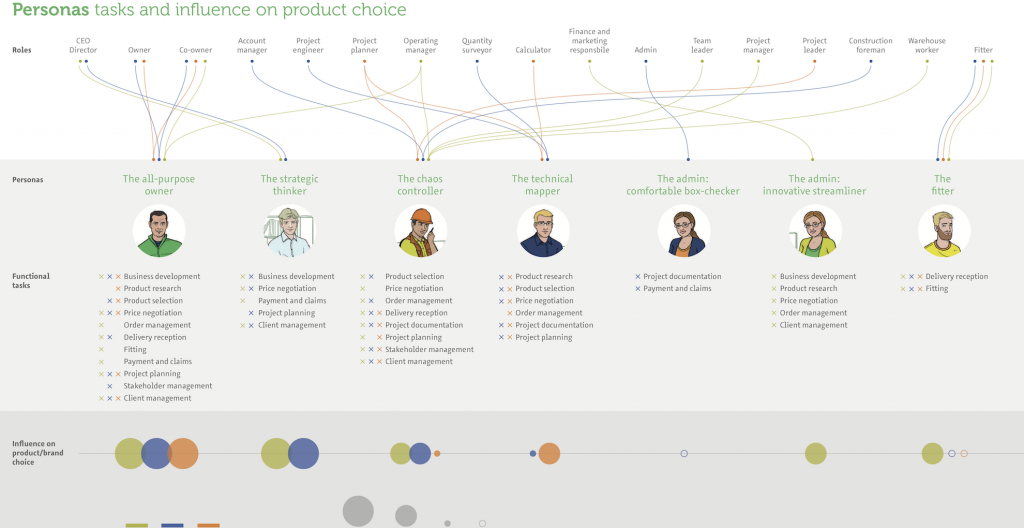
Reinventing customer and supplier interactions for a multinational flooring company Tarkett Share Tarkett, a multinational flooring manufacturer, asked Experientia to explore ways to make them the easiest flooring company to interact with in Europe and the Americas. Experientia conducted in-depth ethnographic research, including contextual interviews and shadowing, in five different countries across Europe, the USA and Russia. We investigated the diverse range of stakeholders of the company, from architects, to flooring installers, wholesalers and retailers. 3 things to know Global research Our benchmark focused extensively on Europe, US, China and Japan while industry experts joined our research from 5 different countries, bringing insights from all around the world. Our local researchers conducted contextual interviews with architects, installers and retailers across five countries, ranging from observations of fitters removing flooring at Paris’ Roissy airport to discussions about design choices with architects in New York. Driving digital transformation Design principles modelled empathic, people-centric frameworks for developing self-service experiences. Innovation playbook in action Experientia designed innovative client-centered product/service solutions to improve supply chain performance, internal processes and company culture and grow Tarkett customer experiences. Gallery In depth Service mix: Design thinking Business strategy design Participatory design Behavioral modeling Ethnography Context A historic manufacturer of flooring products of all types, Tarkett faced the challenge of having to address increasingly fast supply lines at construction sites, while the move to digital experiences meant that they had to rethink and restructure their entire service experience. Challenge Our role as Tarkett’s user experience partner was to consolidate key knowledge dispersed across regional and functional divisions, act as an objective research partner in communicating their customers’ varied service and product needs and propose relevant, innovative solutions to improve the customer experience. Research Experientia interviewed and observed 80+ architects, flooring installers, wholesalers and retailers In USA, France, Netherlands, Sweden and Russia, using a range of ethnographic research methods including expert interviews, contextual inquiries and co-creation workshops. Stakeholders interviews and co-creation exercises with a variety of professional roles mapped the supply chain experience of commercial flooring products and services. Fieldwork results, customer journey maps and personas identified emerging themes ranging from sales relationships to life cycle approaches, product sampling to information management, deliveries to work flow issues. This initiative combined Tarkett’s EMEA, Russia and North America teams to share knowledge and work together on developing promising service concepts. To ensure that expert knowledge was incorporated into foundational research, we conducted stakeholder interviews with a range of employees from country sales managers to C-suite executives, who we involved throughout the research design and ideation processes. Design Experientia generated 150+ service opportunities for the different market segments. Co-design sessions with architects, interior designers, installers and retailers evaluated, prioritised and iterated select service opportunities. High value concepts were developed into concept prototypes and tested in the markets. Impact Our painpoint analysis was taken forward by the company into a detailed action plan: the simplest were addressed immediately, while other were the focus of more structured, longer term interventions. New initiatives and projects were launched, including a service for architects who could send their CAD drawings and renderings to Tarkett with 3 floor choices and would receive a few days later – and free of charge – a completed rendered visualization with those floors. Related projects All Services Behavioral design Research and assessment Strategy B2B Collaboration UI, redesigning the filter navigation experience B2B AR tools for industrial maintenance B2B Driving digital transformation one touch at a time Go back to our portfolio
Low2No: shaping the future of sustainable living
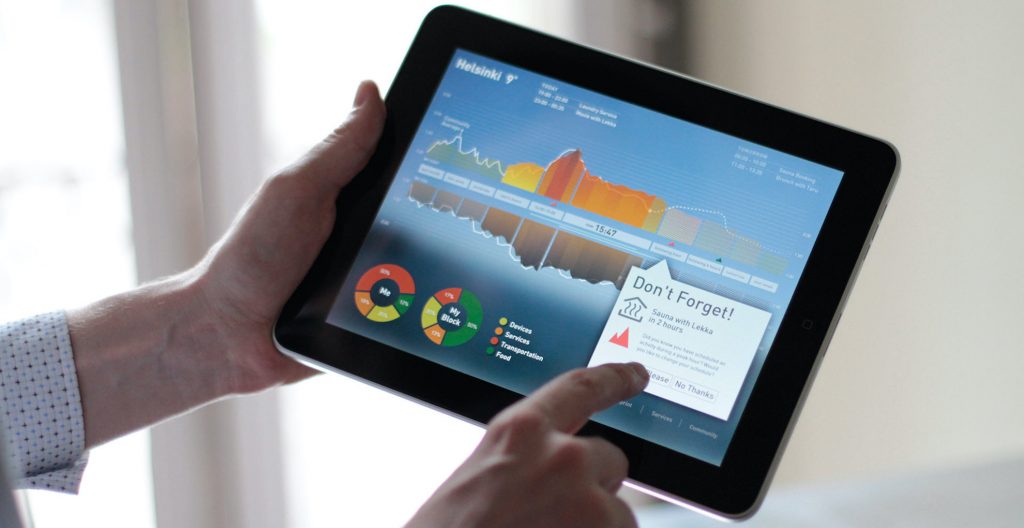
Low2No: shaping the future of sustainable living Sitra, the Finnish Innovation Fund Share In the former container port area of Helsinki, a building block named Airut (“messenger” or “herald” in Finnish) has risen to showcase innovative solutions for green developments worldwide. In collaboration with the engineering firm Arup, the architect studio Sauerbruch Hutton and Galley Eco Capital, Experientia has been a key contributor of this mixed-use development block, which houses around 500 residents, together with small-carbon-footprint services. 3 things to know Creating value through service design We designed energy demand management solutions and services and coordinated “mixed use” service offerings. The core of the service was enabling participatory solutions, such as games, competitions, workshops and websites for all its users. Behavioral change We analyzed drivers of behavioral change like environmental & life constraints, motivation and belief, social pressure and constraints, cultural framework, architectural and interface affordances, and designed fifty initial ideas for tools and services to facilitate behavioral change in Jätkäsaari Award winning Airut and Low2No have already won two awards – the 2011 Italian national prize for innovation in services and an acknowledgement prize in the 2011 Holcim awards for sustainable construction. Gallery In depth Service mix: Prototyping Information architecture Participatory design Service design Ethnography Useful links: Italian National Prize for Innovation in Services Blog post 2011 Holcim awards for sustainable construction Blog post Context The climate crisis requires new ways of designing and living our built environment, particularly in colder countries like Finland. Sitra, the Finnish innovation agency, launched an international competition for a low carbon housing and commercial building complex in Jätkäsaari, a reclaimed goods harbour to the west of central Helsinki, that aims to facilitate behavioural change towards more sustainable lifestyles. Challenge The competition was won in September 2009 by an international team led by global design, engineering and planning firm, Arup, providing engineering and sustainability services. The team also included Berlin-based Sauerbruch Hutton as lead architects and consumer behavior-change strategists Experientia. The building complex covers 22,000 square metres and provides new residences, office and retail space. Emissions are reduced through building design and performance, mobility systems and food production Research As the experience design partner, Experientia’s role has been to nudge the behavior of the people that visit, live and work at Airut, in a lasting sustainable direction. This nudge is being achieved through actively involving potential future residents and entrepreneurs in the development of their future environments, through the design of impactful, sophisticated and sustainable service offerings, and through the creation of behavioral change programmes. Design These interventions help to reduce energy demand and carbon emissions by enabling residents and workers to make better choices about their consumption while enjoying a very high quality of life. They are, in other words, “soft infrastructure” offerings that will complement the block’s “hard infrastructure” for energy and carbon management, including geothermal preheating and cooling, building integrated photovoltaics and a carbon neutral bio-heat product provided by the district heating network. Our specific deliverables have included a behavioral change framework, an award-winning service platform design, and a smart meter user interface design. Experientia has also worked on the planning and design of services, to create, within the Low2No project, a “Food Hub” (offering services related to the purchase, consumption and sharing of regional, organic food, an ethical and sustainable alternative to the products commonly offered in the Finnish market); an “Eco-laundry” (using highly efficient practices and detergents with a low environmental impact); and a communal, wood-fuelled sauna (an eco-friendly response to the presence of a private electric sauna in most Finnish homes). Impact Construction has been completed and the block is now occupied. From now, the sustainable ideals that govern its day-to-day life act as a model and example for the rest of Helsinki, Finland and the world. It has already won two awards – the 2011 Italian national prize for innovation in services (awarded to Experientia), and an acknowledgement prize in the prestigious 2011 Holcim awards for sustainable construction (awarded to the full design team). italian National Prize for Innovation in Services Blog post 2011 holcim awards for sustainable construction Blog post Related projects All Services Behavioral design Research and assessment Strategy Cities & InfrastructureSocial innovation ToNite: social innovation and urban regeneration in Turin, Italy Social innovation Turin Public Libraries, redesigning the cultural experience Social innovation COE, Strengthening access to justice through non-judicial redress mechanisms Go back to our portfolio
CityOpt: Engaging citizens to facilitate energy demand responses
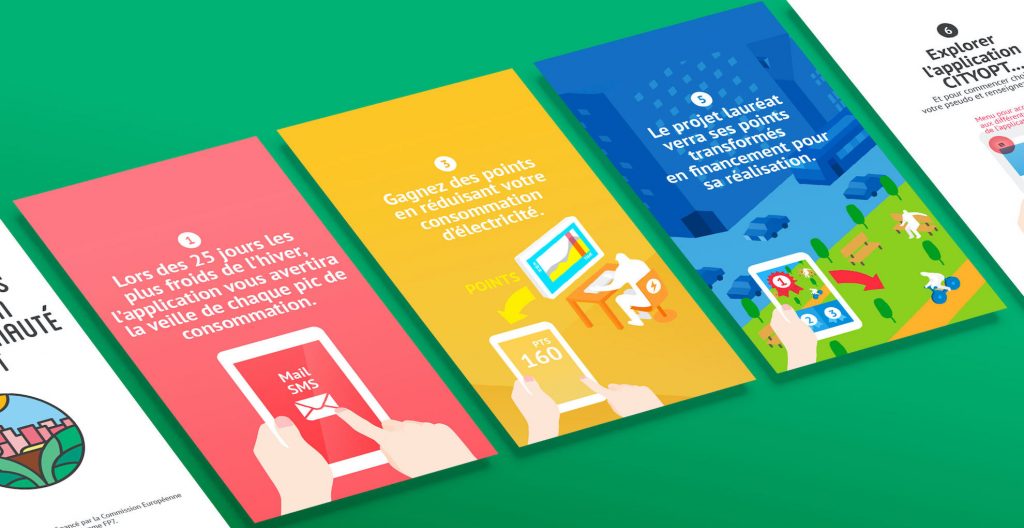
CityOpt: Engaging citizens to facilitate energy demand responses European Commission FP7 Share CityOpt, a research project funded under the FP7 European Commission framework, is getting citizens involved in testing new tools to reduce energy consumption during peak loads, with the goal that this pilot program will set a new trend in protecting locations with fragile electricity supplies. 3 things to know Encouraging behavioral change The CityOpt app helps people reduce domestic energy consumption during energy peak loads and nudges them towards more eco-friendly behaviors. Incentivizing energy reduction Their savings were rewarded with points, which participants could “donate” to a local community project of their choice, helping to maintain people’s engagement with the app. Real time monitoring An office block in Vienna, Austria, uses the CITYOPT app to identify the best scenario to integrate energy supply sources with fluctuating temperatures into an efficient micro-energy network.. Gallery In depth Service mix: Policy development Envisioning Business strategy design Prototyping Information architecture Participatory design Service design User experience testing Context One of France’s most fragile regions, the Provence-Alpes-Côte d’Azur, is perhaps best known for its vineyards, lavender groves and sparkling coastal cities like Nice. It is however also one of France’s most fragile regions for electricity supply. Particularly in winter, when electrical heating sees electricity use rise, the locals experience frequent blackouts, as the local energy provider, EDF, tries to manage the supply. This is why Nice Côte d’Azur has been selected as a pilot city for the CITYOPT project, an initiative that aims to create new methods and tools to deal with energy consumption, and to involve local citizens in designing and testing them. CITYOPT is a pilot programme funded by the European Commission that explores and tests new tools for reducing energy consumption during peak loads. Research Experientia has led the user research activities for the pilot program. User experience methodologies have engaged local citizens from the area in interviews, workshops and design activities. These have defined what people really need to help them control their energy use, and to create a mobile app that the pilot participants will be able to use to do just that. The entire project has applied a user experience (UX) methodology, to make sure that the tools and methods that the project proposes for energy management resonate with the people who will have to use them. It’s not just Nice Côte d’Azur: other pilots are planned for Helsinki, Finland and Vienna, Austria, where similar UX methods are also being applied. Right now, the Nice pilot looks at the residential level, and explores how people’s everyday behaviors can be nudged to better support the energy use of the entire region. Model Changing individual behaviors to help the entire region The Nice Côte d’Azur local population plays a crucial role in reducing domestic electricity consumption during peak loads. To help people change the way they consume electricity, the pilot provides selected locals with the CITYOPT mobile app (aka the CITYOPT Operational tool). The app informs people about upcoming network peak loads, and then uses playful persuasion to get them to commit to lowering their energy consumption at a specific time. How the app was created – a participatory process The Experientia design team also focused on the visual design of the mobile application. In workshops for design idea creation, designers and local stakeholders came together to brainstorm innovative ideas that could potentially be included in the app. A second participatory workshop, again involving local stakeholders, compared these ideas to the expectations and needs of local people, which had been uncovered in the original interviews and workshops with people from the region. The feasibility of the different ideas was discussed, and the final features for the CITYOPT app were selected. Designing, sketching and coding is a long road from ideas to app. First Experientia’s design team, with the support of the local project partners, worked on three wireframes of the app, which defined the information architecture and interaction model for how the app would work. Later on, colors and styles were added, taking it from outline to a fully-fledged design. Experientia then developed the front-end, web-based code, while the consortium partners – CSTB and EDF – implemented the back-end, repositories, hardware interfaces and statistical algorithms. Nice Côte d’Azur Métropole was responsible for localizing the application in French and recruiting local dwellers to participate in the pilot test. Impact The project was piloted with 200 households in Nice using the CITYOPT app during the first wave of testing. During the demonstration test, leader Experientia explored how people use the app, whether they take part in the demand-response scenarios, and what conditions and driving factors are most likely to convince people to participate. The test research was supported by quantitative and qualitative activities like online surveys, contextual interviews and contextual observations. The actual consumption data was also measured through pre-installed smart-meters, and used to evaluate the effectiveness of the CITYOPT system. The CITYOPT project has provided us with real data on effective ways to convince people to reduce their energy use at a level that can help improve the consumption of an entire region. It’s now a matter of scaling up the project to the entire region, and beyond, and providing a body of information that can be used by any region looking for effective ways to reduce energy use. Meanwhile, the other CITYOPT pilot programmes will demonstrate that Nice is not a solitary example, and that user experience methodology can offer real impact on people’s behaviors, and on behavioral change for more sustainable lifestyles. Related projects All Services Behavioral design Research and assessment Strategy Cities & InfrastructureSocial innovation ToNite: social innovation and urban regeneration in Turin, Italy Cities & InfrastructureSocial innovation Low2No: shaping the future of sustainable living Go back to our portfolio
Mapping the SPID registration journey, to improve the citizen experience
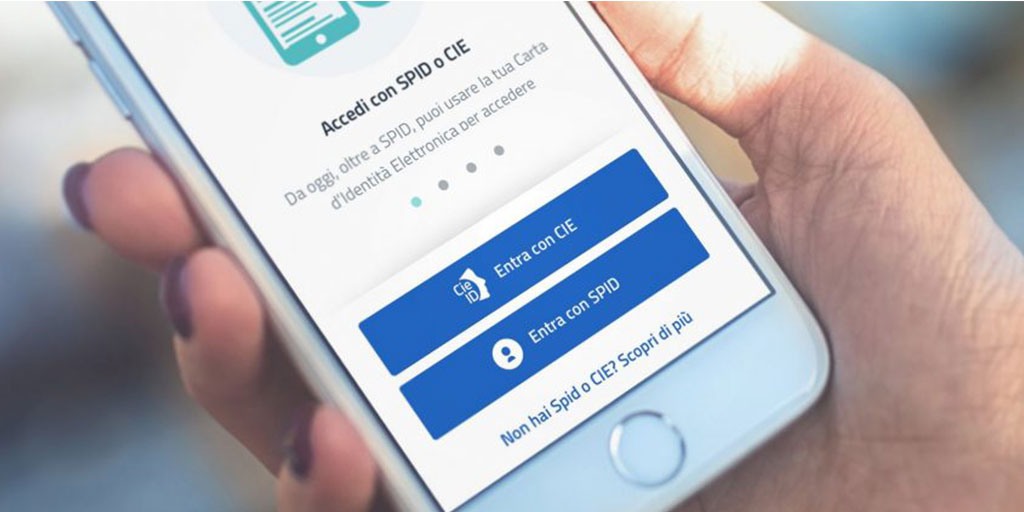
Mapping the SPID registration journey, to improve the citizen experience Department for digital transformation, Presidency of the Council of Ministers Share Driven by the necessity to improve and expand the national system of digital Identity called SPID, the Department for digital transformation, Presidency of the Council of Ministers selected Experientia to conduct a heuristic evaluation to assess the various end-to-end digital registration flows and qualitative research with Italian customers who had registered in the previous 6 months. The objective was to understand the critical needs and pain points in the overall service experience in order to provide UX guidelines and an updated strategic roadmap for improving current processes. 3 things to know A single “key” to access the public administration The government ambition was to provide citizens with a single access method to all the services offered by a multitude of organisations in the public administration. SPID applications grew more than twofold during the first COVID-19 lockdown. A multitude of registration options Our heuristic evaluation assessed 3 different registration processes for the 9 official SPID providers on both desktop and mobile. Some providers offered up to 6 different sign-up flows. People just wanted to avoid queueing The COVID-19 pandemics and the social distancing rules encouraged SPID citizens to sign-up using remote options even for ID validation. One of the strongest motivation to avoid analog ID validation was to avoid queuing in public offices. Gallery In depth Service mix: Design thinking Participatory design Service design Context Driven by the necessity to improve and expand the national system of digital Identity called SPID, the Department for digital transformation, Presidency of the Council of Ministers selected Experientia to conduct a heuristic evaluation to assess the various end-to-end digital registration flows and qualitative research with Italian customers who had registered in the previous 6 months. The objective was to understand the critical needs and pain points in the overall service experience in order to provide UX guidelines and an updated strategic roadmap for improving current processes. Challenge The objective of the project was to understand the critical needs and pain points in the overall service experience in order to provide UX guidelines and an updated strategic roadmap for improving current processes. Research The project started with stakeholder interviews to clearly outline the strategic objectives of the project and of the wider SPID system. We conducted an heuristic evaluation about the UX of requesting SPID to identify major issues in the mobile and computer-based subscription experience. Followed by in-depth interviews with 18 Italian citizens to better understand their overall experience in the subscription and use of the SPID system. Design The analysis of combined research outcomes enabled us to identify crucial issues and opportunities for subscription and service improvement. The recurring patterns of customer expectations and behaviours allowed to build 4 customers journeys based on 4 customers profiles. During a participatory workshop with relevant internal stakeholders, we validated and prioritized opportunities to improve the current UX registration experience and systemic opportunities to support the growth and flexibility of the SPID system for the years to come. Related projects All Services Behavioral design Research and assessment Strategy Cities & InfrastructureSocial innovation ToNite: social innovation and urban regeneration in Turin, Italy Social innovation Turin Public Libraries, redesigning the cultural experience Social innovation COE, Strengthening access to justice through non-judicial redress mechanisms Go back to our portfolio
Singapore: a city for people aging gracefully
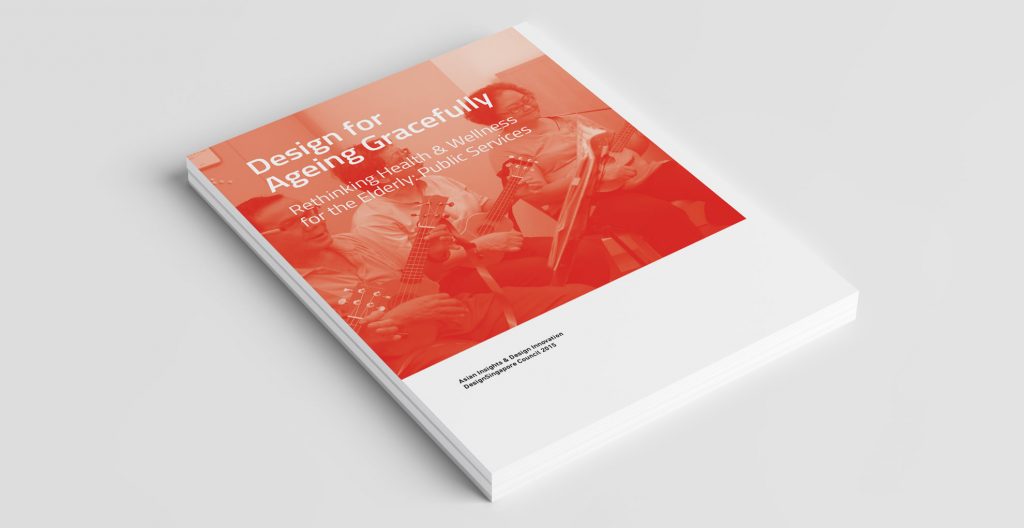
Singapore: a city for people aging gracefully DesignSingapore Council Share DesignSingapore Council asked Experientia to explore health and wellness for the elderly in the Singaporean public sector. We conducted ethnographic research and participatory design workshops, as part of a drive to develop design-led innovation for the health industry. 3 things to know Design ethnography and service design Experientia explored current healthcare experiences of the aging population in Singapore through design ethnography identify opportunities for design-driven innovation in public healthcare. We identified opportunity areas for design-driven innovation in the Singaporean public healthcare space to help Singapore create the right conditions to support a rapidly aging society. Interactive map of findings The interactive map allows people to browse the personas alongside field research videos, that communicate the research findings in the participants’ own words. Long lasting impact The findings have been incorporated in the Health Ministry’s ongoing Action Plan For Successful Ageing, and guided the development of a new residential impact. Gallery Singapore is proactively addressing the problems of a rapidly aging society We explored what is like to grow older in Singapore today, carrying out contextual interviews and shadowing with elderly people, their carers, and people with the healthcare industry. In participatory design workshops with Singaporean stakeholders, we introduced experience design guidelines and created concepts and strategies to improve the elderly healthcare system in Singapore. Our 8 personas show different experiences of aging and using the healthcare system in Singapore. Our customer journeys maps show the typical issues the participants experiences as they tried to manage their health. In depth Service mix: Design thinking Policy development Envisioning Participatory design Service design Behavioral modeling Ethnography Useful links: Download the pdf English language Website External link Singapore press External link Press release External link Press article External link Press article External link Context By 2030, Singapore will experience a profound shift in its age demographics with the elderly population increasing by three times. This calls for a radical change in perspective on how care can be better delivered to the elderly. Challenge To prepare and plan for that change, The DesignSingapore Council’s Asian Insights and Design Innovation (AIDI) programme embarked on a Rethinking Health and Wellness for the Elderly project to look into developing design solutions that better meet the needs of the elderly in Singapore, and asked Experientia to carry out an extensive research and analysis project , including a workshop with participating public agencies and services from the Singapore healthcare system. Research The project started with an understanding of global trends in elderly healthcare services. This was then followed by a design ethnography study through interviews and shadowing – to gather deep qualitative insights into the habits and behaviours of the elderly and to identify trends, behaviors and gaps in the interaction between elderly people and the healthcare system. From the observations, we learned about how the elderly think, act and feel towards managing their health at home and their needs and wants. Experientia developed 8 personas to begin the process of designing for behavioural change and explore solutions like ageing-in-place, peer-to-peer support and community platforms to solve some of the elderly healthcare issues. Participatory workshops allowed stakeholders from the public to be part of this process generating 12 main user-centred design concepts. In two multi-day innovation workshops with healthcare and public service stakeholders, representatives from the healthcare industry and public sector joined Experientia and DesignSingapore Council in Singapore. Here we introduced the challenges the participants face on a daily basis, showing video clips from the research to reveal the human faces behind the research. The stakeholders developed service concepts that would suit the unique characteristics of Singapore. Design Experientia team designed an interactive map of findings, a rich database resource that invites stakeholders to explore and be inspired to innovate and design relevant solutions for the ageing population. The concepts were useful to guide Singaporean healthcare agencies to create strategies, policies and services. The results of the project were compiled in a handy publication for further use in Singapore and freely available for anyone. As part of the project, Experientia also worked with Singaporean agencies and ministries to devise community-focused concepts for elderly residents in the Kampung Admiralty residential block. Co-creation workshops prototyped key policy decisions on ageing, health and housing. Impact Experientia’s report recommendations were widely reported in the Singapore press and were integrated in the Government’s $3billion Action Plan for Successful Ageing (website – pdf – press release – press article). The Kampung Admiralty residential block has been completed. It incorporated many of the concept ideas that were co-created in the Experientia-lead workshops. Download the pdf English language Website External link Singapore press External link Press release External link Press article External link Press article External link Related projects All Services Behavioral design Research and assessment Strategy Cities & InfrastructureSocial innovation ToNite: social innovation and urban regeneration in Turin, Italy Health GoCare: Interactive dashboard for a better home hospitalization service Health Rare disease patient journey mapping Go back to our portfolio
CSA: sentiment-based decision support platform for crypto-currency trading
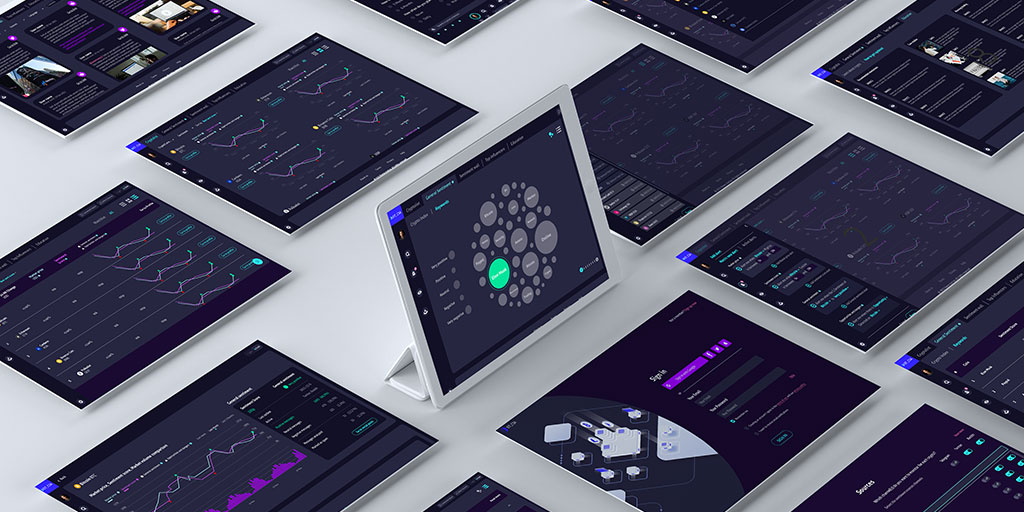
CSA, Sentiment-based decision support Platform for crypto-currency trading EIT Digital, European Research Project Share As a partner of the CSA-Crypto Sentiment Advisor (an EIT research project), Experientia co-designed a web-based dashboard to inform better decisions in the crypto market. Leveraging traders’ individual level of expertise, the solution aims to mitigate risk by using real-time community sentiment data. 3 things to know Understand the habits of cryptotraders By interviewing cryptotrading experts and cryptotraders with different levels of experience, we were able to understand their habits, their sources of information, and the web platforms currently most used by those who invest in cryptocurrencies. Define the value proposition Using co-design methodology we worked with other project partners to identify a USP and the platform’s MVP: a dashboard to inform better decisions in the crypto market by using real-time community sentiment data. Design and validate the MVP solution Based on the results of the research and the co-design work done with the project partners, we designed the UX/UI of the platform, validated it with user interviews, and defined web development specifications. Gallery In depth Service mix: Design thinking Prototyping Information architecture Participatory design Ethnography Context As a partner of the CSA-Crypto Sentiment Advisor (an EIT research project), Experientia co-designed a web-based dashboard to inform better decisions in the crypto market. Leveraging traders’ individual level of expertise, the solution aims to mitigate risk by using real-time community sentiment data. Challenge The platform is based on a sentiment analysis model for cryptocurrency using advanced machine learning methods. Investors can use the signals to manage volatile phases of their portfolio to be well positioned in difficult times. During the research phase, Experientia conducted research interviews with lead users and led co-design activities with project partners to identify the Value proposition and the MVP functionalities. In the design phase, we designed the dashboard prototype and validated it with potential users. Research During the “early bird period” November-December 2020 Experientia research team conducted remote stakeholder interviews. The in-depth interviews allowed us to investigate the research question from a broad, comprehensive perspective. The main objective of the research was to investigate and identify opportunities for helping cryptotraders with sentiment-analysis tool. Model At the beginning of 2021 Experientia conducted 2 workshop with all the partners. We shared insights from the stakeholders and user research phase to inform and define the value proposition. Through participatory and co-design methodologies we facilitated the development of the next phases as well as conducted UX concept ideation activities. Design Experientia utilized findings from research to frame and define solutions for the design phase. In particular we design and validate the HI-fi prototype of the Sentiment-based decision support Platform for crypto-trading. Related projects All Services Behavioral design Research and assessment Strategy Finance Banca 5, a new branchless bank model Consumer technologyFinance BancoSmart, an award-winning ATM FinanceHealth XME Salute: integrating insurance offerings with wellness and health practices Go back to our portfolio
Turin Public Libraries, redesigning the cultural experience

Turin Public Libraries, redesigning the cultural experience CSI Piemonte Share CSI Piemonte partnered with Experientia to redesign the new digital experience for Turin public libraries: an ecosystem of more that 15 local libraries spread across the Turin area. Weekly design thinking workshops and co-creation activities with the local libraries team allowed us to gather all the different perspectives of a complex reality diversified among the territory. 3 things to know One website, more that 15 local libraries The website of the Turin public libraries (“Biblioteche Civiche Torino”) gathers all the information connected to more that 15 local libraries spread across the territory. Every library has its own audience, events, reading proposals, services and articles. Library directors highlighted the importance of each library: every user sticks to his neighborhood library rather than being a frequent visitor to all libraries. For this reason, creating sub-homepages for each library was important to support users in their usual behavior using the service. Design thinking workshops Design thinking methodology was applied in order to achieve a final website that was cohesive and could meet all the different needs among the complex and diversified contexts of the territory. Weekly meetings with the librarys’ selected tea allowed a step by step approach and the possibility to validate each part of the website with the stakeholder in charge of that service: events, programs and projects, children section, historical and local collections. A piece of an ecosystem The website is a part of a complex ecosystem composed of a catalog online and a digital lending platform. The two services (catalog and digital lending) are not located within the Turin public library website but instead in different domains. These three platforms have to recall each other’s contents and give the perception of a solid ecosystem. Information architecture methodology and content organization were necessary in order not to lose any pieces during product integrations. Gallery In depth Service mix: Prototyping Information architecture Participatory design Useful links: Biblioteche civiche torinesi External link Context The Turin Public library website had to be updated in terms of information architecture and prioritization of informations, as well as visual presence and new look and feel. The portal is the final stage of the “Rethinking Turin Civic Libraries” project, launched in 2019 on the occasion of the 150th anniversary of the founding of the Central Civic Library and supported by Intesa Sanpaolo. Research An extensive desk research allowed the team to spot best practices and common design patterns used by the most important library websites. A detailed content audit was necessary to be sure that each information of the “old” website would have been revised during the redesign. Weekly meetings with stakeholders and two specific workshops (directors of local libraries and kids&teens audience) were the key stages to came out with important insights that led the design choices. Design The redesign of the website was supported by information architecture and wireframes activities. The responsive website is designed with a mobile first approach and uses common design patterns, usability rules and accessibility. See here for the final outcome of the project. Biblioteche civiche torinesi External link Related projects All Services Behavioral design Research and assessment Strategy Cities & InfrastructureSocial innovation ToNite: social innovation and urban regeneration in Turin, Italy Social innovation COE, Strengthening access to justice through non-judicial redress mechanisms HealthSocial innovation Singapore: a city for people aging gracefully Go back to our portfolio
Customer experience insights to innovation

Customer experience insights to innovation Deutsche Telekom (Germany, Greece, Hungary, Slovakia) Share Experientia has been commissioned by Deutsche Telekom to conduct multiple research activities aimed at envisioning opportunities for new products and services development with diverse time horizons. 3 things to know Improve Deutsche Telekom customer’s home experience Expand upon the range of Deutsche Telekom clients and reshape its existing customer home business. Multi-horizon innovation strategy Identify new business opportunities both for incremental innovation and as opportunities around future needs and trends. Design best practice guideline for CX research Involve internal stakeholders and share project outcomes as a strategic roadmap for innovation research at Deutsche Telekom. Gallery User scenarios User scenarios Insights clustering Workshop day Workshop day In depth Service mix: Design thinking Participatory design Service design Ethnography Useful links: Link External link Context Since home consumer behaviors and needs change over time influenced by various factors such as technological advancements, economic conditions, cultural trends, and individual preferences it is important to keep and a human-centered approach in order to understand if we are addressing the evolving needs and expectations and understanding how to improve existing experiences and design new ones also in the long term. Challenge Identify customer experience strategy that evolves home consumer business opportunities and improves customer experience. Research Experientia has started by conducting stakeholder interviews and hypothesis workshop to define research directions and align with Deutsche Telekom stakeholders. Social media listening activity has coupled with a market and trend research to understand macro phenomenon and identify weak signals, emerging practices and major trends that may have local impact. Expert interviews have been conducted to understand their perspective of the changing customer needs, while in-home customer and lead user interviews helped to understand users behavior and observe emerging behaviors respectively. Design Experientia has analyzed the emerging research information and identified relevant insights. The interview insights have been prioritized using customized analysis-based design tools. Thematic insights have helped to identify moments that matter during customer experience. This information has determined a relevant impact in problem reframing and subsequently in creating initial opportunities, that serves as a basis to shape innovative concepts and value propositions for improving existing experience and shaping new solutions. Impact Experientia created 10 innovative concept value propositions that include added value for current CX, products, service and future products and services experiences. for improving customer experience to successfully defend/reshape business efforts and increase footprint in the homes and minds of Deutsche Telekom customers. Link External link Related projects All Services Behavioral design Research and assessment Strategy Consumer technology Buttonless: engaging users in interactions with keyless devices Brand UXConsumer technology European car aesthetics: Unveiling preferences and values Brand UXConsumer technology Mobile Privacy UX Go back to our portfolio

